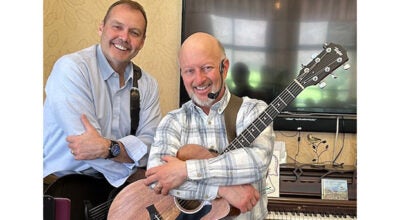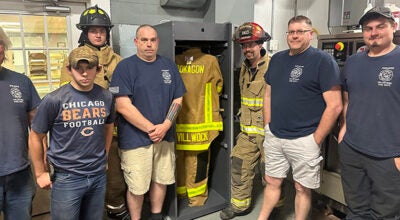Ask Trooper Rob: Motorized wheelchairs treated as pedestrians
Published 9:52 pm Tuesday, November 22, 2011
Judi from Niles asks about motorized wheelchairs, which I have discovered, is a confusing topic. The following is the answer from my Traffic Services Section in Lansing.
By strict definition, motorized wheelchairs are vehicles (“…every device in, upon, or by which any person or property is or may be transported or drawn upon a highway, except devices exclusively moved by human power or used exclusively upon stationary rails or tracks…”). MCL 257.79. Note: A nonmotorized wheelchair is not a vehicle because it is moved exclusively by human power.
Motorized wheelchairs are also, by definition, a motor vehicle (“…every vehicle that is self-propelled, but for purposes of chapter 4 of this act motor vehicle does not include industrial equipment such as a forklift, a front-end loader, or other construction equipment that is not subject to registration under this act. Motor vehicle does not include an electric patrol vehicle being operated in compliance with the electric patrol vehicle act. Motor vehicle does not include an electric personal assistive mobility device.”). MCL 257.33.
Note: A motorized wheelchair is not an “electric personal assistive mobility device.” As defined by MCL 257.13c, an electric personal assistive mobility device is a Segway.
Motorized wheelchairs do not qualify as “special mobile equipment” (MCL 257.62) because they are designed and used primarily to transport people.
This leave us with the undesirable outcome that motorized wheelchairs are a motor vehicle and must be treated as such (i.e., license, registration, insurance). This may sound absurd, but that is the strict letter of the law.
A better solution, which is what a a vehicle code sergeant teaches, is to treat them as pedestrians. This logic is accepted by many local magistrates.
The reasoning is the wheelchair is a replacement for walking. I actually prefer this outcome, but it doesn’t really fit with the vehicle code (a pedestrian is defined as “any person afoot.” MCL 257.39).
This brings up the markings, specifically, orange triangles on slow-moving vehicles. I wanted to write about this separately because there is a lot of confusion about the orange triangle. By statute (MCL 257.688(1)(g)(ii)), a slow-moving vehicle is required to have an orange triangle. The orange triangle does not grant different or additional rights to a vehicle. To the contrary, the triangle is an additional requirement.
In other words, a person cannot merely place an orange triangle on any vehicle and take it on the road.
Merely placing an orange triangle onto a vehicle does not automatically convert it into “special mobile equipment” or “an implement of husbandry.”
Those vehicles have different rights and duties due to their status as special mobile equipment (no registration required, etc.) or an implement of husbandry (width limitations do not apply, etc.). The orange triangle does create those different rights/duties.
In regards to motorized wheelchairs, if we treat them as motor vehicles, then they must have an orange triangle. If we treat them as pedestrians, then they do not have to have one.






